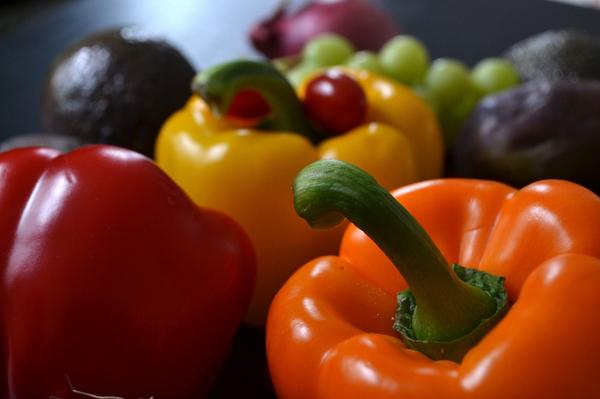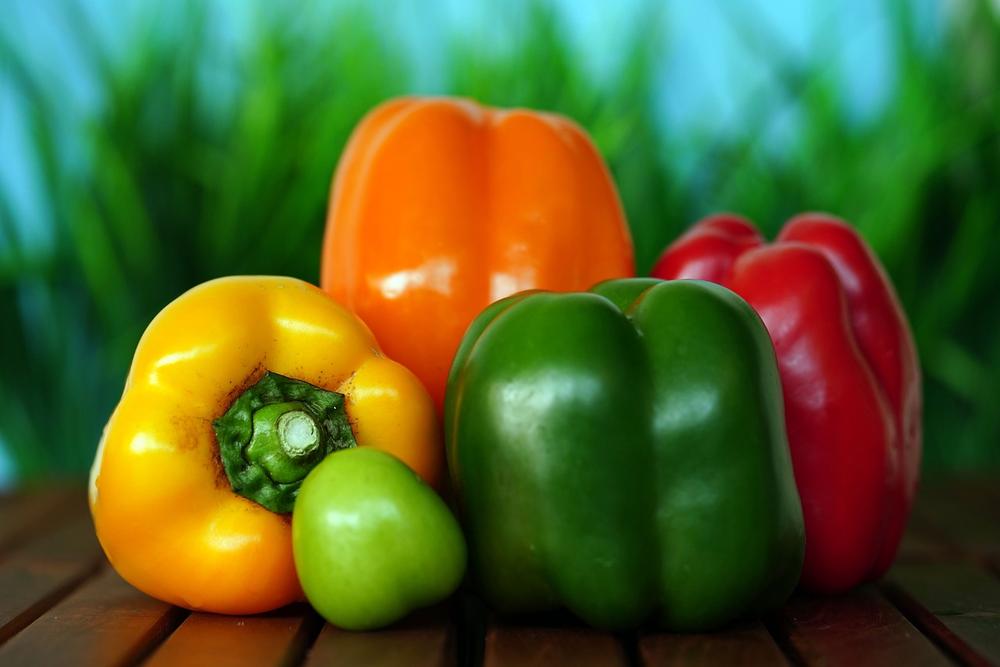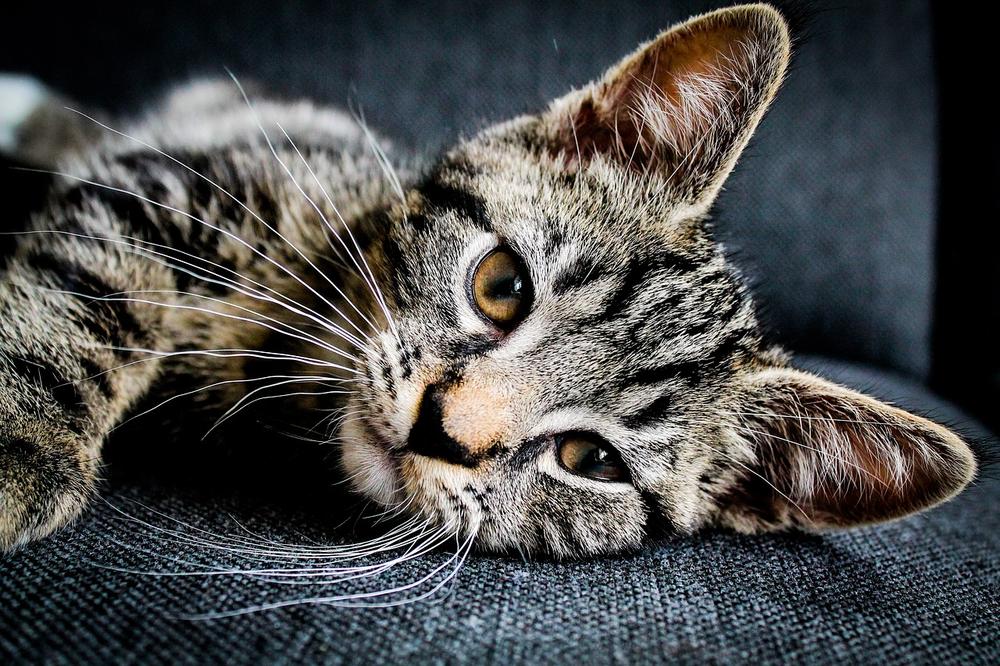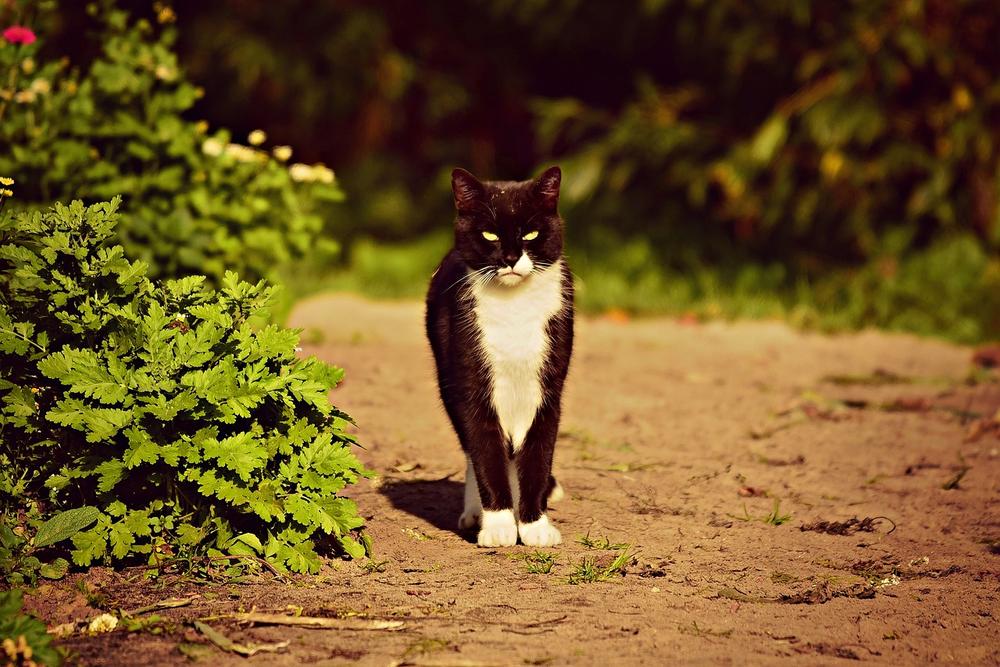Can Cats Eat Bell Peppers?

You'll agree with me when I say:
Making sure your furry friend stays safe and healthy is your top priority.
So, when it comes to feeding your cat, you're naturally cautious, maybe even slightly paranoid. 😺
You're probably wondering what could go wrong if your adorable ball of fur gets a taste of bell peppers.
Will your beloved companion break out in hives?
Will she start speaking in tongues and plotting world domination?
I get it, I really do.
But let's put those worries aside for a moment and explore this intriguing topic together.
Let's dive into the world of cats and bell peppers.
Shall we?
Potential Risks: Cats Eating Bell Peppers
Feeding bell peppers to cats can be risky.

Here's why:
- Cats may be allergic to bell peppers - watch out for itching, swelling, or difficulty breathing.
- Bell peppers are tough to digest and can harm cats, so it's generally not recommended.
- Avoid banana peppers, chicken with garlic/onions, and bell pepper plants - they cause tummy troubles, vomiting, diarrhea, and choking hazards.
- Large quantities of bell peppers lead to indigestion, belly pain, irritation, and foaming at the mouth.
- Cats struggle to digest bell peppers due to high fiber, oxalates in skins, and capsaicin.
- Eating them regularly causes digestive issues, tummy irritation, pains, and nutritional deficiencies.
- Bell peppers aren't toxic, but watch for allergies and consult a vet if needed.
- Be sure to give plenty of water if there are any negative reactions.
- If you're considering feeding your cat veggies like raw bell peppers, talk to a vet first.
- There are other safe fruits and veggies that provide nutrition for your fur baby.
Keep your furry friend's health in mind when choosing their food! 😺
Main points I'll expand upon further down this article:
- Bell peppers are safe for cats to eat in moderation.
- Bell peppers do not provide significant nutritional benefits for cats.
- Cats should primarily obtain their nutrition from animal products.
- Yellow and green bell peppers have lower vitamin content compared to red bell peppers.
- Bell peppers can contribute to cat health by providing iron and vitamin C.
- Cats may prefer sweeter and crunchier substances over bell peppers.
- Cooked bell peppers are recommended for cats with sensitive stomachs.
- Thoroughly wash and discard stems from bell peppers before cooking them.
- Avoid feeding cats spicy peppers like jalapenos as they can be harmful.
- A high-quality diet for cats should primarily consist of meat, organs, and bones.
But here's the intriguing part...
While bell peppers may not be an ideal food choice for your furry friend, there are other fruits and vegetables that are both safe and nutritious for cats.
So, let's dive in and discover the top options that will keep your cat happy and healthy!
Are Bell Peppers Safe for Cats?
While bell peppers are generally safe for cats to eat in moderation, there are a few things you should keep in mind.
Moderation is key.
Eating small amounts of bell peppers won't harm your cat.
Digestive discomfort.
However, if your feline friend eats too many bell peppers, it may cause some tummy troubles and irritation.
No toxins or danger.
Rest assured, bell peppers won't introduce any harmful toxins to your cat's body.
Not a main meal.
Although bell peppers can be given as a treat, they shouldn't make up a significant portion of your pet's diet.
Potential damage.
Feeding your cat excessive amounts of bell peppers could harm their digestive system, so be cautious.
Shortened lifespan.
Keep in mind that relying solely on bell peppers for your cat's nutrition can lead to a shorter lifespan.
Opt for low-acid options.
For a wellrounded diet, consider including apples or broccoli along with the bell peppers.
Enjoy small portions.
In conclusion, your furry friend can safely indulge in small portions of bell peppers without any harm. Remember to always seek personalized advice from your veterinarian regarding your cat's unique dietary needs.

But wait, you may be wondering if bell peppers offer any nutritional benefits for cats...
Benefits of Bell Peppers for Cats
Bell peppers offer benefits for cats, such as providing iron to prevent anemia and vitamin C to reduce inflammation. They can also help with constipation. However, you have to remember that bell peppers should be part of a balanced diet alongside other cat-friendly fruits and vegetables.
Alright, let's have a chat about bell peppers and your cat.
Now, bell peppers aren't exactly the superhero of cat nutrition. But hey, they can still be a nice little treat for your furry buddy.
You see, cats are carnivores.
They need their animal products to stay healthy and strong.
But that doesn't mean bell peppers are useless for our feline pals.
Nope, not at all...
These vibrant veggies actually have some benefits. First off, they've got iron.
And trust me, iron is super important for preventing anemia in cats.
Anemic cats are no fun, so let's keep those little fluffballs full of energy.
Oh, and guess what?
Bell peppers are packed with vitamin C too.
Vitamin C fights inflammation naturally.
It swoops in and lowers inflammation levels in cats' bodies, which is great because nobody wants pesky inflammation.
Plus, it's good for their eyes and digestion too.
Gotta make sure those kitty tummies are happy!

Now, here's a handy tip: just like us humans, cats sometimes struggle with constipation.
But don't worry!
Bell peppers might help with that.
These crunchy guys can actually relieve constipation in cats.
Who would've guessed?
And you know what?
Different cats have different tastes.
Some kitties may go wild for red bell peppers, while others prefer the green or yellow ones.
It's like a fiesta of bell peppers in your furry friend's food bowl!
But hold on, bell peppers alone won't cut it.
Make sure your cat gets a balanced diet, including other cat-friendly fruits and veggies like broccoli, carrots, spinach, apples—you name it. But remember, moderation is key!
So there you have it, my friend.
That's the lowdown on bell peppers for cats.
Go ahead and spoil your fur baby with a veggie extravaganza!
And now, let's talk about how to safely introduce bell peppers into your cat's diet and ensure their tummy stays happy and healthy!
Here's what I suggest...
How to Safely Introduce Bell Peppers to Your Cat's Diet
So, you want to introduce bell peppers to your cat's diet? 🐱
Well, you have to do it safely.

Here are some key points to consider:
- Start with small, bite-sized pieces of raw bell peppers to see how your cat responds. This will also help you check for any food sensitivities or allergies.
- Cook the bell peppers before feeding them to your cat if they have a sensitive stomach. Make sure to wash them thoroughly and remove the stems before cooking. No seasonings needed.
- If your cat has food sensitivities or allergies, begin with a small amount and gradually increase it if there are no adverse reactions. Moderation is key to prevent digestive issues.
- Always make sure the bell peppers are fresh, plain, and washed before giving them to your furry friend.
Introducing new foods to your cat's diet should be done slowly and carefully. Don't forget to consult your vet if you have any concerns!
And that's not all! If you're still feeling curious about what else you can safely add to your cat's diet, be sure to check out my article on Can Cats Eat Peppermint.
This helpful guide will provide you with valuable information on determining whether peppermint is a safe treat for your feline friend.
You don't want to miss out on this essential knowledge that can help you make informed decisions when it comes to your cat's diet.
Cats and Jalapeno Ingestion
Feeding cats spicy jalapenos is a bad idea, my friend.
The capsaicin in these fiery peppers can cause tummy troubles for your furry companions.
Vomiting and diarrhea might become unwelcome guests if you let them have a taste.

Even worse, capsaicin could burn their delicate mouths, throats, and tummies, causing more pain.
And don't forget about potential skin irritation.
No one wants an itchy kitty!
So, if Fluffy gets her paws on those spicy snacks, don't delay – get her to the vet right away!
To keep your feline friend purring with joy, just avoid giving them any spicy peppers altogether.
Store-Bought Cat Treats vs. Home-Prepared Cat Foods
When it comes to choosing between store-bought cat treats and home-prepared cat foods, there are some important things you should think about:
- Quality of ingredients: Store-bought treats often have stuff in them that isn't great for your cat's health. With homemade meals, you can use high-quality ingredients like organic meats and fresh veggies.
- Control over nutrition: Those pre-packaged treats might not have all the nutrients your cat needs. When you make their food at home, you have total control over what they're eating. You can make sure they get a good mix of meat, organs, and bones for the best nutrition.
- Avoiding allergens: By making your own cat food, you can choose ingredients that won't cause allergies or sensitivities for your cat. This way, you keep them feeling good and healthy.
- Cost-effectiveness: Sure, making meals at home might seem pricier upfront, but in the long run, it can save you money compared to buying store treats all the time.
- Bonding experience: Making food for your cat is a great way to spend time together. It lets you bond with your furry friend while taking care of their nutritional needs.
Considering all these factors, going for homemade cat food is really beneficial for your cat's in essence well-being. ✨
And that wraps up today's article.
If you wish to read more of my useful articles, I recommend you check out some of these: Can Cats Eat Arugula, Can Cats Eat Spinach, Can Cats Eat Basil, Can Cat Eat Peanuts, and Can Cats Eat Oregano
Talk soon,
-Sarah Davis